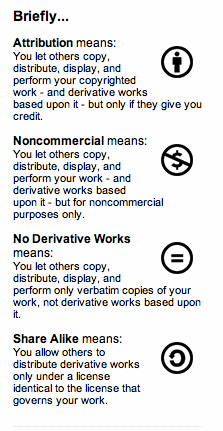Blogging
The Dark Side Of The Cloud
I am often asked what cloud computing is. Most people know the buzzwords: working in the cloud, move to the cloud, life in the cloud, etc. Technically speaking, Wikipedia says cloud-computing means using multiple server computers via a digital network, as though they were one computer. Cloud computing, like regular computing, can be broken up…
Read More5 Social Media Must Haves
Here are the 5 things every business must do to build a community online and bring in clients via social media. 1. Website It’s your web basecamp, start here. photo © 2006 Grant Kwok | more info (via: Wylio) 2. Blog, forum, or some way of delivering active audience-focused content. I have a few clients…
Read MoreThe Secret is in Breaking the Chicken and Egg Problem
I found this BNET blog article interesting. BNET interviewed Ceriac Roeding of Shopkick and he discussed the ‘Catch 22’ facing many entrepreneurs. How do you establish that first base of business? Credibility struggles with success. You have to make someone actually BELIEVE. He cited examples he learned through his startup, Shopkick. These examples are transferable to many small…
Read More10 Things You Could Do Instead Of Going To Work Today
photo © 2009 Marcy Kellar | more info (via: Wylio) I’m on vacation at the beautiful boutique hotel of Posada Yum Kin in Tulum, Mexico. So while I’m whiling away my time walking the pristine beaches or snorkeling in one of the numerous cenotes in the area, I think you should take it easy, too.…
Read MoreDynamic Websites and What They Mean For Your Small Business
There are a lot of people out there suggesting that a small business owner can create their website overnight. And you can. But will it do what you want it to do? photo © 2007 Ben Zvan | more info (via: Wylio) What exactly do you want it to do? Are you happy with a…
Read MoreAttention, please
Frazzled? Me, too. Leave it to Chris Brogan to help us find our ‘center’. Check out his short video entitled, “What Has Your Attention“. He sure set me straight. I think this is something that all entrepreneurs and small business folks struggle with. Sometimes there are so many choices of what you COULD do that you…
Read MoreFree -and Legal- Images for Your Blog
For basic tips on using images online, please see our blog, Image Basics for Bloggers, from last week. What is Creative Commons? In the past, buying photography was expensive and complicated. Royalties needed to be paid and photos were limited to many restrictions on how they could be used. Then along came Creative Commons in…
Read More

